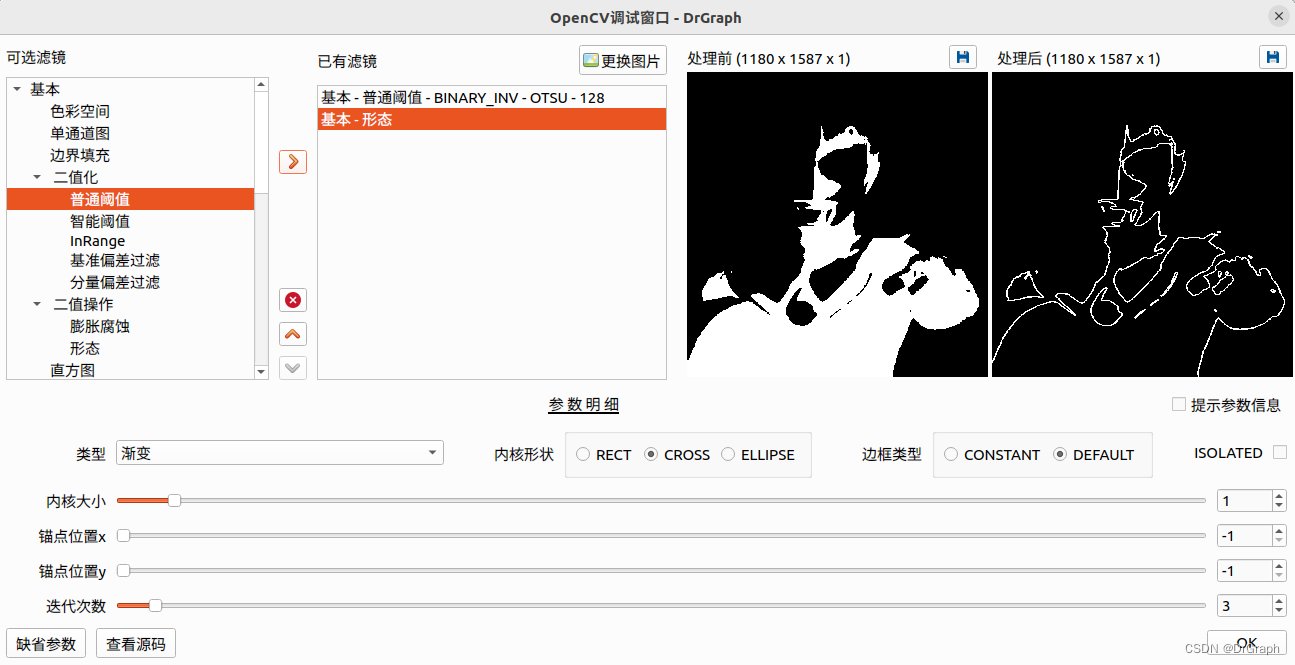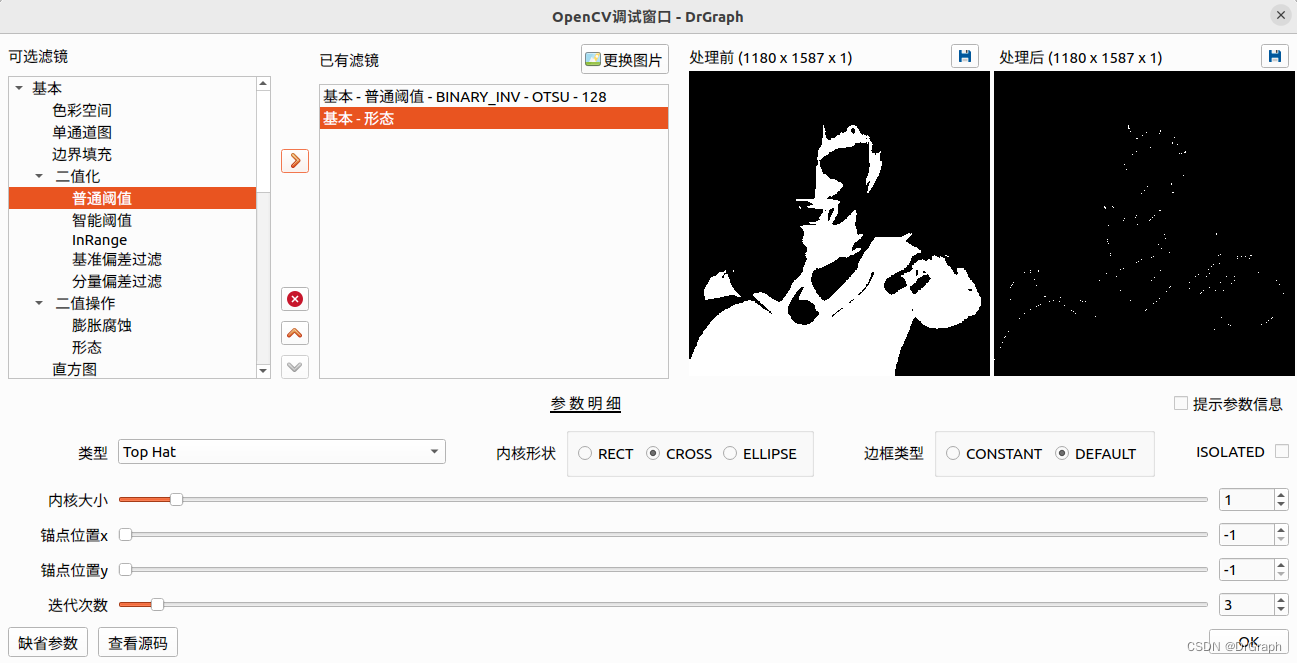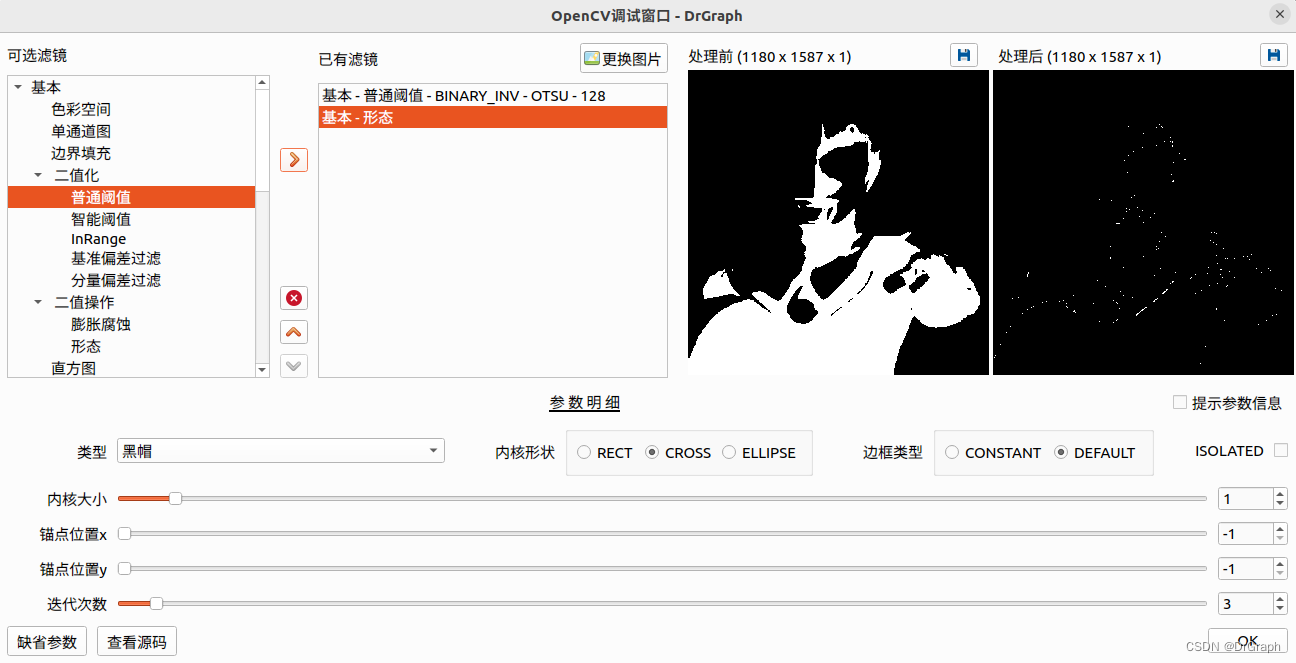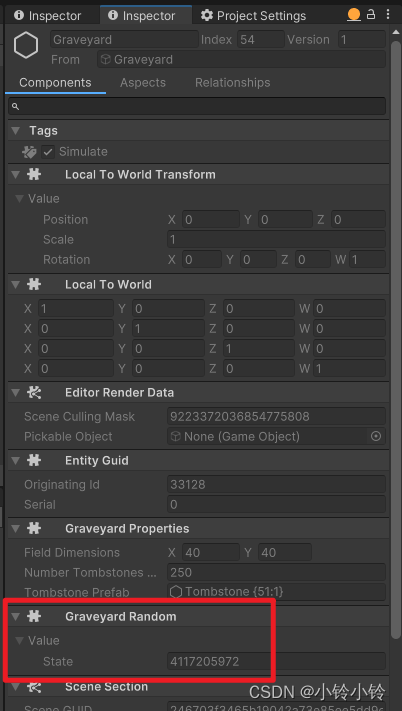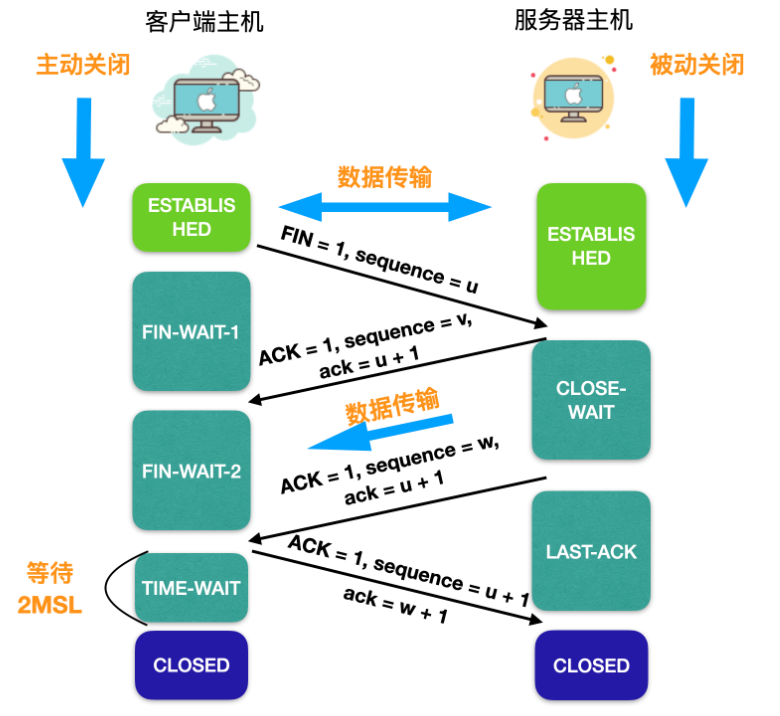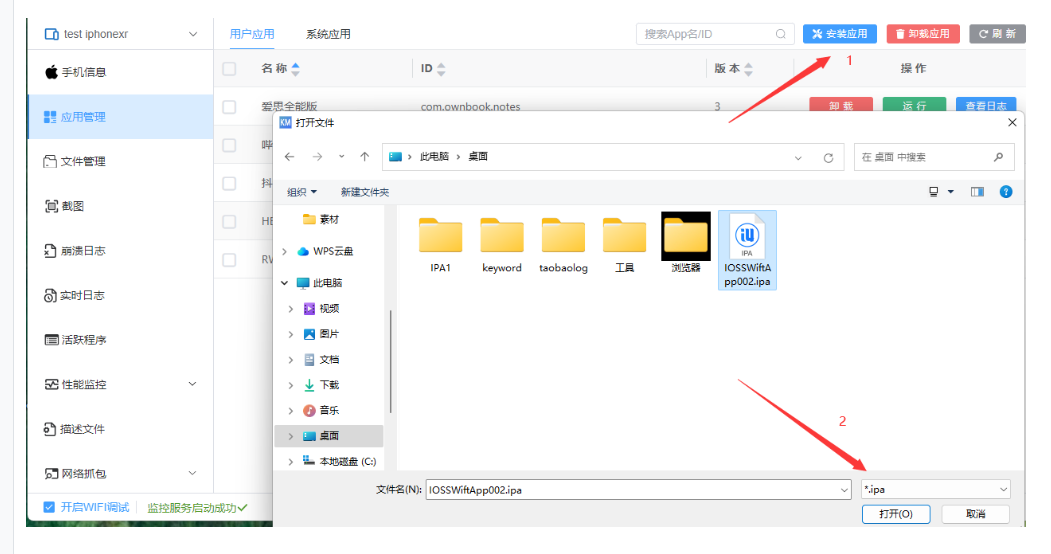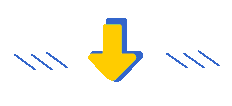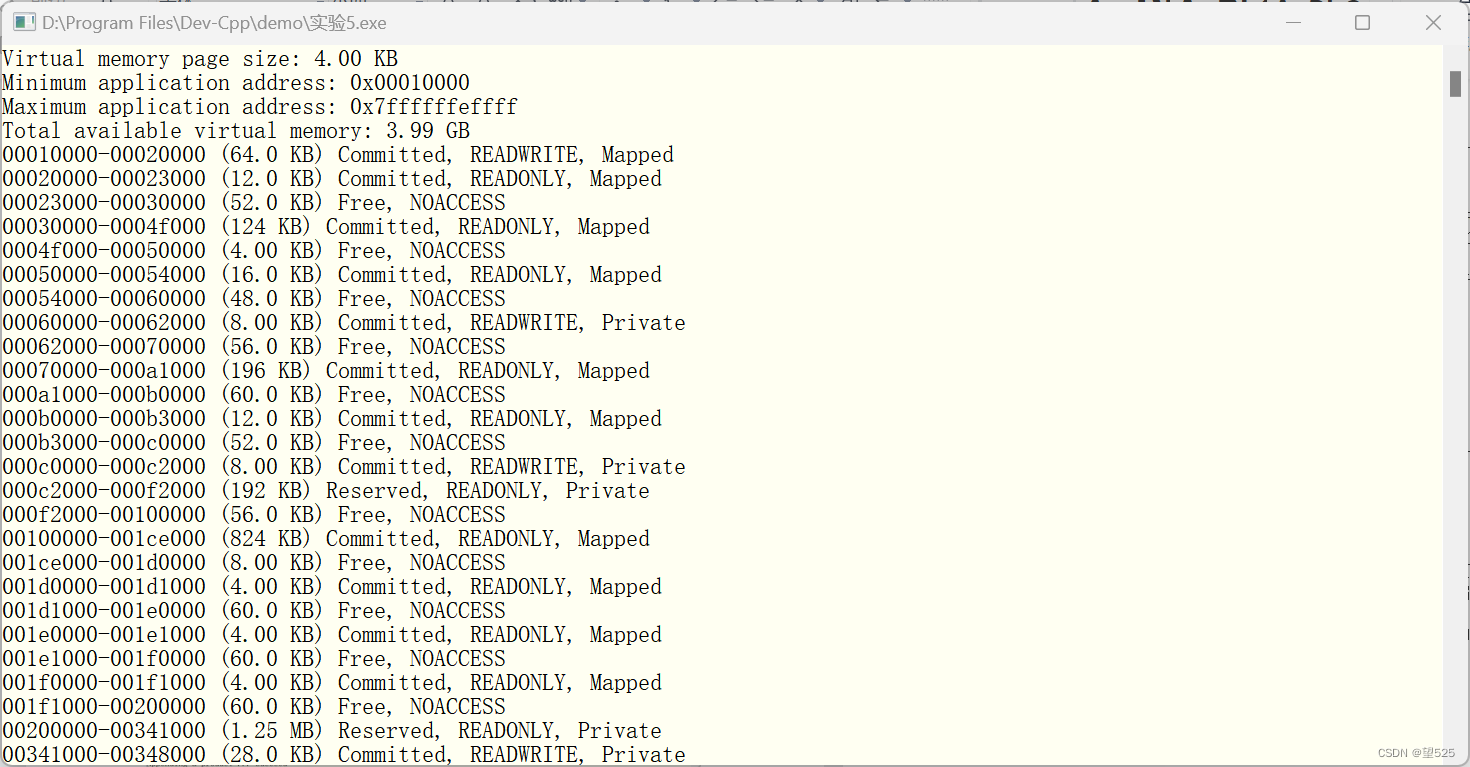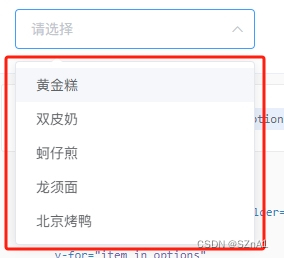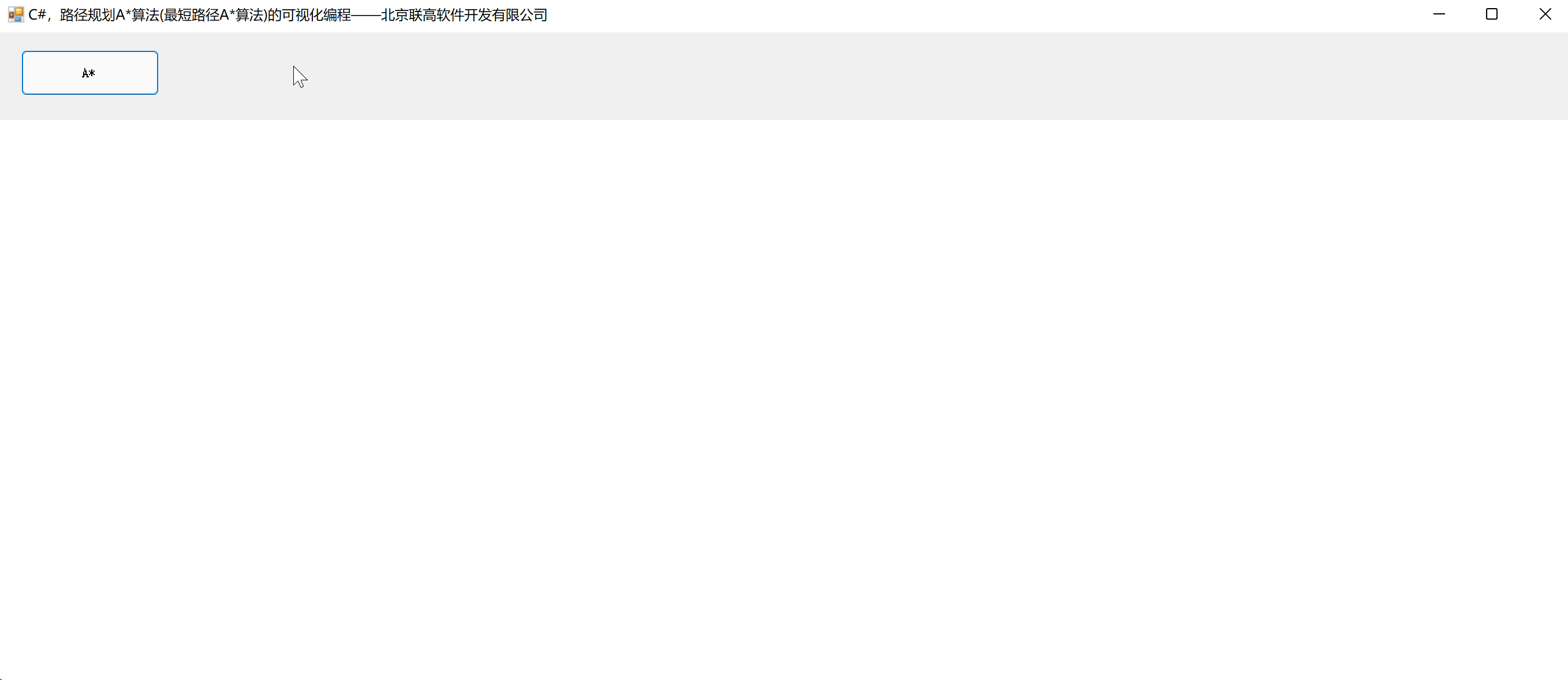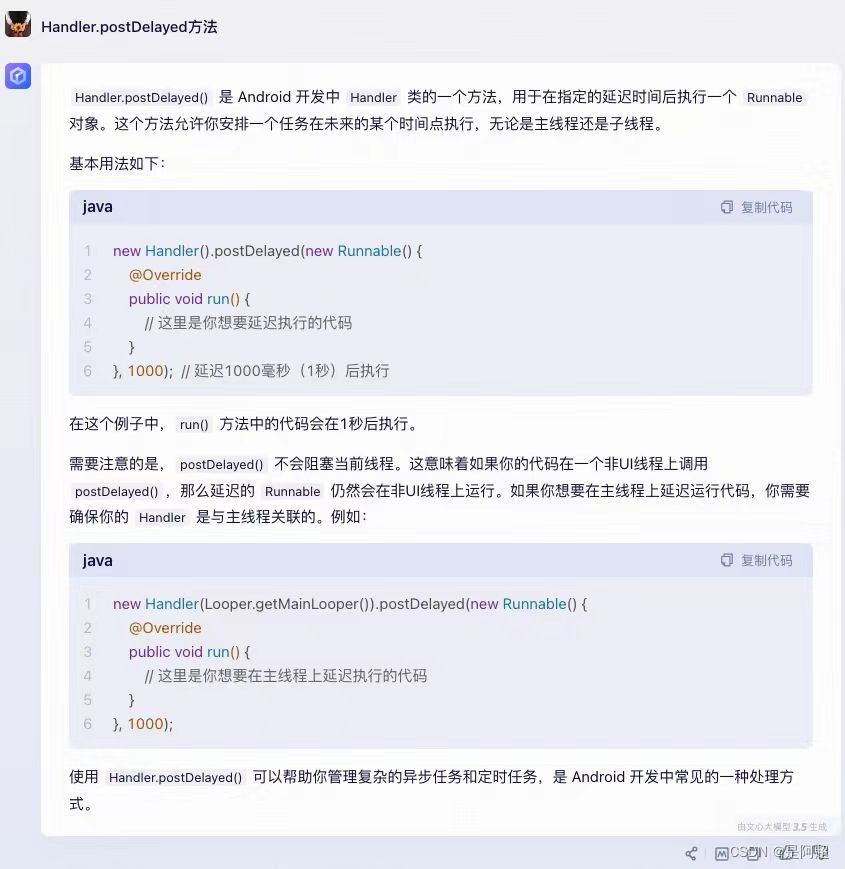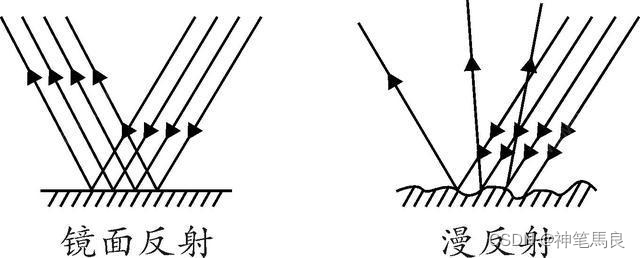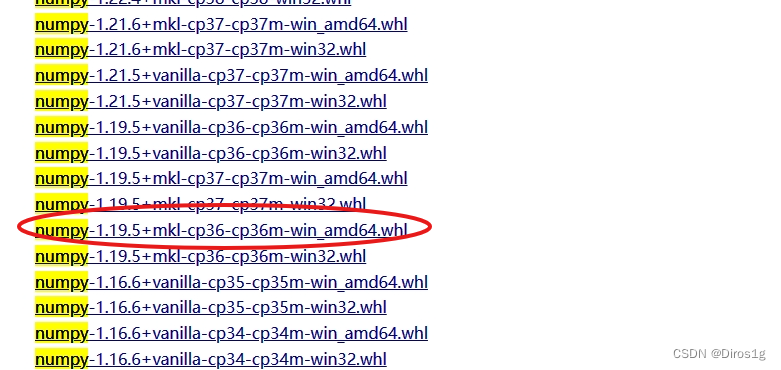形态类型
从OpenCV图像处理基本知识来看,膨胀腐蚀操作后,还有形态操作,如开运算、闭运算、梯度、礼帽与黑帽,感觉很多,其实,本质上就是批处理操作,如
开运算:先腐蚀,再膨胀
闭运算:先膨胀,再腐蚀
这样,从一个原图,就可以得到4种结果,膨胀、腐蚀、开、闭
这4种结果,主体还是与原图差不多的,区别就在于一些噪声点(小的白点)、比较近的区域合并,有利于后续的图像分析
这些结果可以为主体,但很多地方还想看看边界或轮廓,那就需要在这些主体之间进行差值,或是减法操作,这样,结果就是边缘,就象两个大小不同的同心圆,差值后就得到圆环。
OpenCV作为一个基础的或通用的图像处理,那肯定是需要支持不同的需求,象刚说的这些主体差异,功能也是存在了,只不过采用了相应的所谓专业术语来进行称呼,如梯度、礼帽与黑帽
如,梯度 = 膨胀 - 腐蚀
正常的理解,减法嘛,肯定是大减小,直观感觉,膨胀应该比腐蚀大。但从本质上来说,膨胀与腐蚀的结果都是二值图,它的各像素点取值范围都是BYTE,各BYTE相减,结果都还是BYTE。如2-1=1,1-2=-1=0xFE。从结果来看,前者是黑色,后都是白色,也就是反相效果。
上面把膨胀与腐蚀折腾来折腾去,玩出了花,还能怎么玩?这两个再怎么组合,也不能再花了吧,如果要多来几次,那就增加一个迭代次数
但从主体而言,最原始的主体就是原图,所以可以把原图和膨胀腐蚀结果进行减法操作。直观上来说,膨胀 > 原图 > 腐蚀,所以可以这些减。但OpenCV没有直接支持这种操作的功能,如果自己想,实现一个就行了,名字就自己随便取,不象下面说的这个礼帽与黑帽,还要反应半天。
可能是觉得膨胀、原图、腐蚀相邻的差异太小,减的效果不明显,所以OpenCV支持的就是间隔差,如上面提到的
梯度 = 膨胀 - 腐蚀,而
礼帽 = 原图 - 开运算结果
黑帽 = 闭运算结果 - 原图
没有细究开运算结果、原图、闭运算结果的大小关系,从礼帽与黑帽的定义来看,猜测是闭运算结果 > 原图 > 开运算结果
爱谁谁吧
API
OpenCV中,形态操作的API函数是morphologyEx,正常理解
@param src Source image. The number of channels can be arbitrary. The depth should be one of
CV_8U, CV_16U, CV_16S, CV_32F or CV_64F.
@param dst Destination image of the same size and type as source image.
@param op Type of a morphological operation, see #MorphTypes
@param kernel Structuring element. It can be created using #getStructuringElement.
@param anchor Anchor position with the kernel. Negative values mean that the anchor is at the
kernel center.
@param iterations Number of times erosion and dilation are applied.
@param borderType Pixel extrapolation method, see #BorderTypes. #BORDER_WRAP is not supported.
@param borderValue Border value in case of a constant border. The default value has a special
meaning.
@sa dilate, erode, getStructuringElement
@note The number of iterations is the number of times erosion or dilatation operation will be applied.
For instance, an opening operation (#MORPH_OPEN) with two iterations is equivalent to apply
successively: erode -> erode -> dilate -> dilate (and not erode -> dilate -> erode -> dilate).
*/
CV_EXPORTS_W void morphologyEx( InputArray src, OutputArray dst,
int op, InputArray kernel,
Point anchor = Point(-1,-1), int iterations = 1,
int borderType = BORDER_CONSTANT,
const Scalar& borderValue = morphologyDefaultBorderValue() );
调用实现
// 基本 - 二值操作 - 形态」类 - 滤镜处理 - 对dstMat进行本滤镜逻辑变换处理
int paramIndex = 0;
int method = GetParamValue_Int(paramIndex++); // 0: 类型 - 开;闭;渐变;Top Hat;黑帽
int kernelShape = GetParamValue_Int(paramIndex++); // 1: 内核形状 - RECT;CROSS;ELLIPSE
int borderType = GetParamValue_Int(paramIndex++); // 2: 边框类型
if(borderType == 1)
borderType = BORDER_DEFAULT;
bool ISOLATED = GetParamValue_Bool(paramIndex++); // 3 - 边框类型的 ISOLATED 标志
if(ISOLATED)
borderType = borderType | BORDER_ISOLATED;
int kernelSize = GetParamValue_Int(paramIndex++); // 4: 内核大小 - 用于确定操作的核
int anchorX = GetParamValue_Int(paramIndex++); // 5 - 锚点位置x
anchorX = CAST_RANGE(anchorX, -2 * kernelSize - 1, 2 * kernelSize + 1);
int anchorY = GetParamValue_Int(paramIndex++); // 6 - 锚点位置y
anchorY = CAST_RANGE(anchorY, -2 * kernelSize - 1, 2 * kernelSize + 1);
int iterations = GetParamValue_Int(paramIndex++); // 7 - 迭代次数
Mat element = getStructuringElement( kernelShape, cv::Size( 2*kernelSize + 1, 2*kernelSize+1 ));
morphologyEx( dstMat, dstMat, method, element, cv::Point(anchorX, anchorY), iterations, borderType);
演示视频
OpenCV 4 功能 - 形态
从演示视频可看出,差值的效果确实不明显,感觉如果 膨胀 - 原图 - 腐蚀 相邻相减,基本看不到效果
